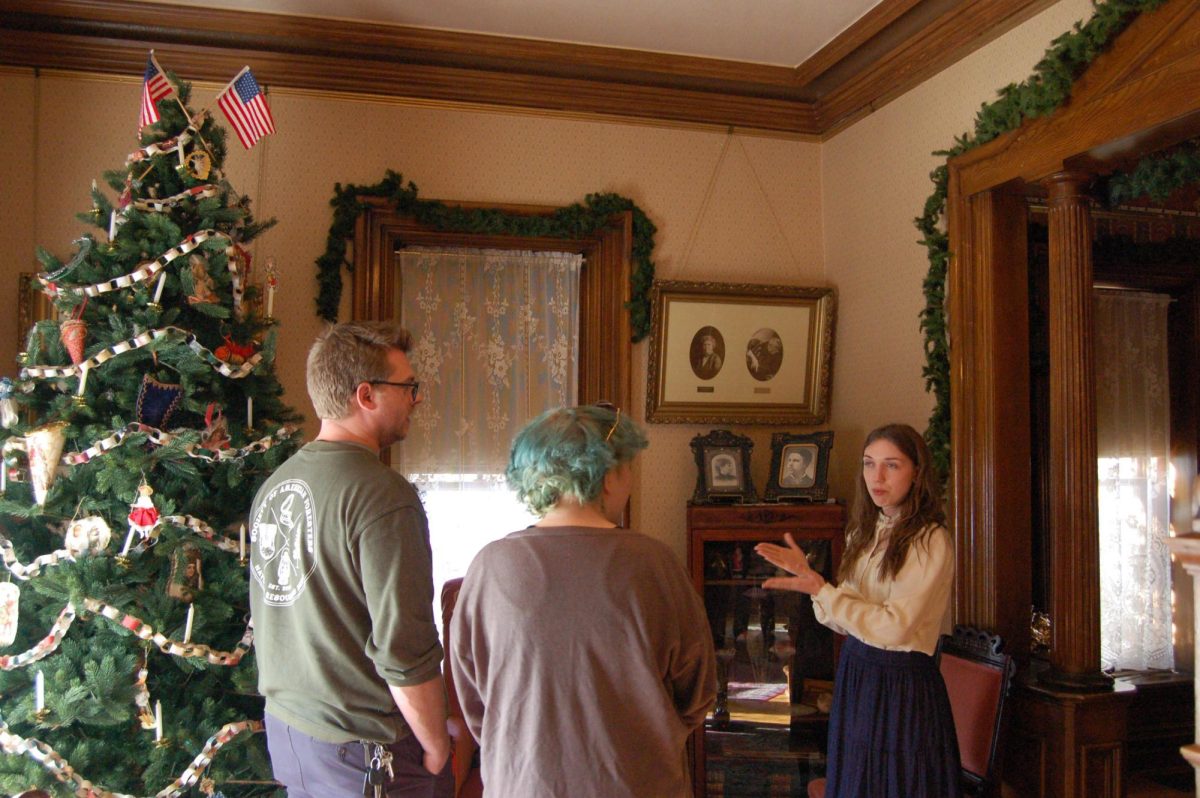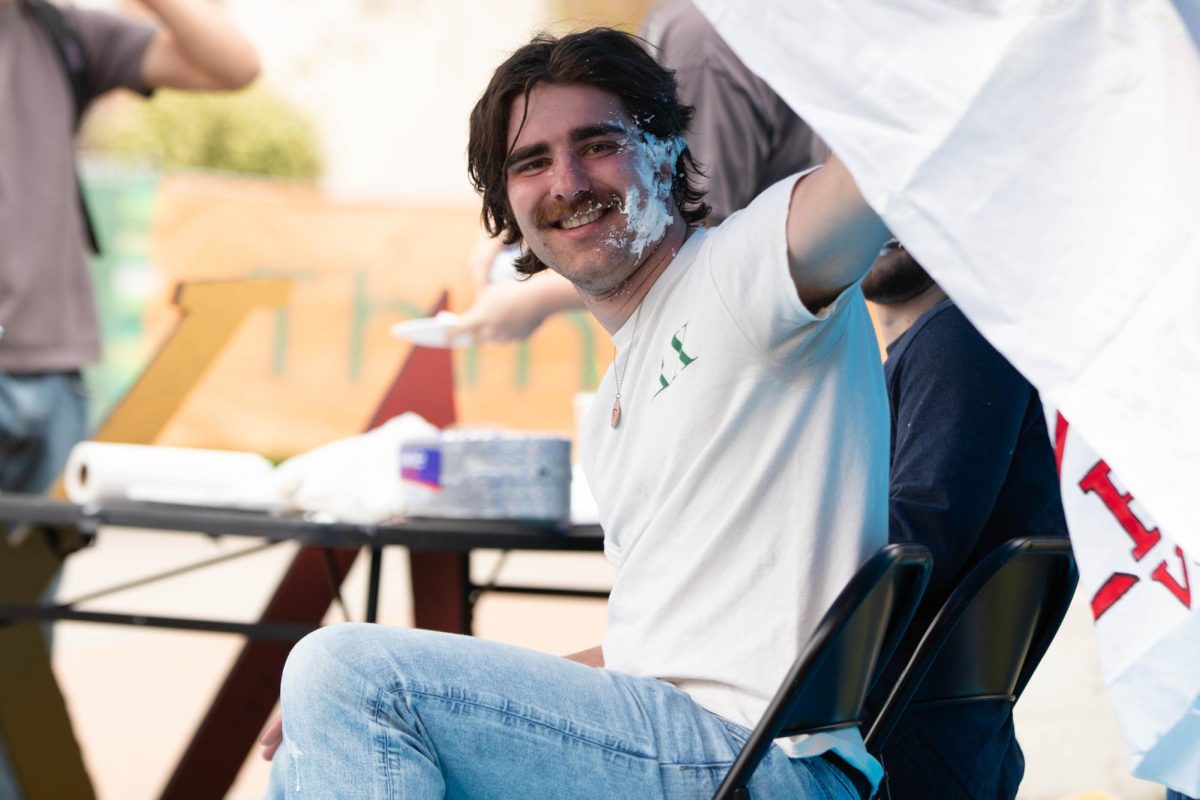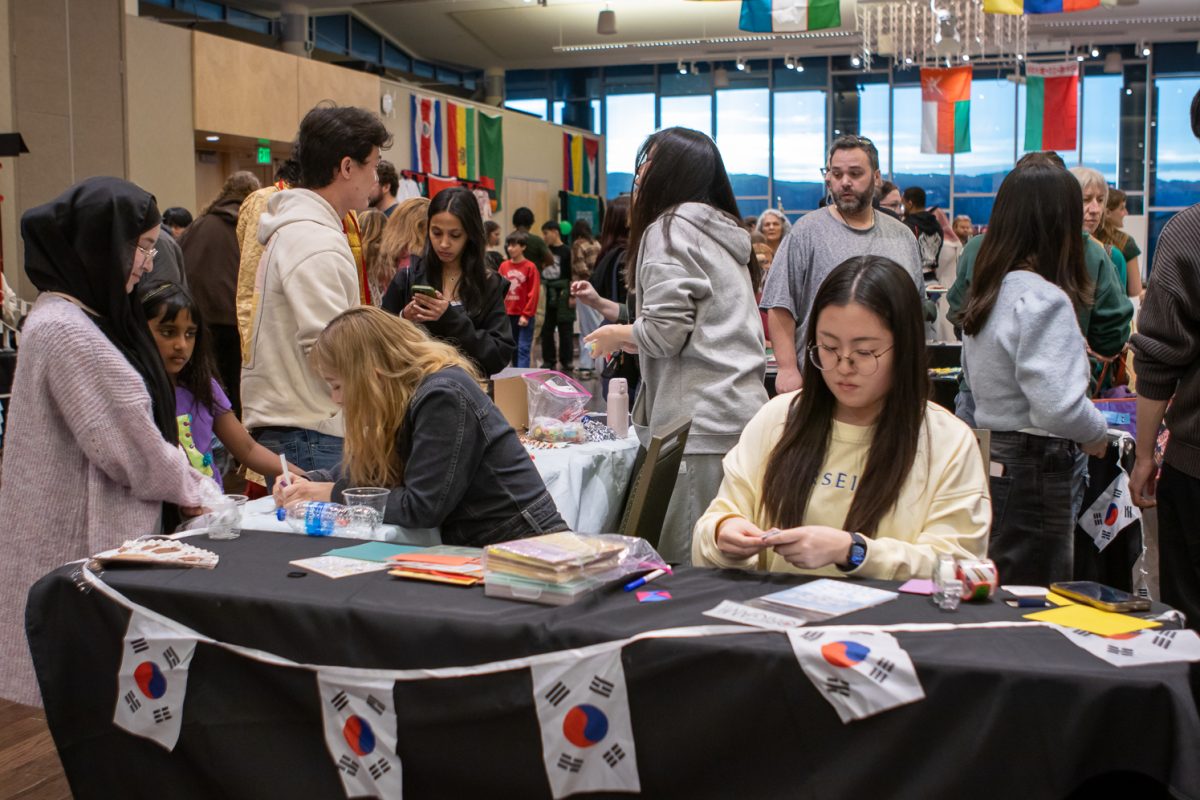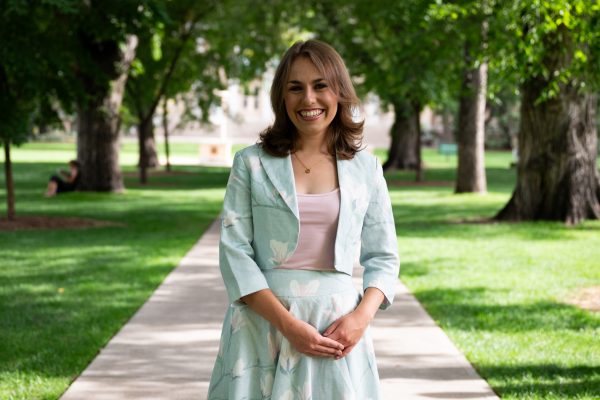Heather Reid stands in the soft sunlight streaming through a thick glass window on a chilly early December afternoon. To the many passersby on the sidewalk who may catch a glimpse of Reid through the window of the historic 1879 Avery House, it would appear as if they had suddenly stumbled back 144 years in Fort Collins history.
Through the window, Reid, a docent at the Avery House, is dressed in a Victorian-era navy blue gown complete with a tulle petticoat, a broach and a dangling chatelaine. Reid displays the tools of the chatelaine — a tiny pair of scissors, a piece of microscope glass and a key — to Sam Schaefer and Grace Poat, two other costumed Avery House docents working to give tours to community members Dec. 2.
The Avery House has been a part of Fort Collins history and stood tall on Mountain Avenue through nearly a century and a half of change and modernization. Franklin Avery moved to Fort Collins in 1873, when he surveyed the town, built wider streets and founded the First National Bank of Fort Collins and worked on water projects, promoting the agricultural future of Northern Colorado.
Franklin Avery and his wife, Sarah Avery, had three children: Edgar, Ethel and Louise, who grew up in the Averys’ Fort Collins house. Edgar’s diary at age 12 was preserved and is read by docents on tours. A copy of his diary is also for sale in the house.
During their time in Fort Collins, the Averys added several extensions and additions to the house. Descendants of the original Avery family remained living in the house until 1962. The Poudre Landmark Foundation, which was formed in 1972, worked with the City of Fort Collins to purchase the house in 1974, when restorations began.
Today, the Avery House is a preserved memorial of life in Victorian era Colorado. Some artifacts belonged to the Avery family, such as portraits, a tea set and mementos from two trips to Japan, while other artifacts have been donated by community members who have connections to the Victorian era, including Reid, who is an amateur Victorian glass enthusiast.
“I know a weird amount about American glassware,” Reid said. “So I came and took a tour and pointed out politely to one of the docents the things that didn’t belong. And they immediately said, ‘Hey, you should come volunteer.'”
Reid’s collection of Victorian glass has been a rotating exhibition on display in an extra upstairs bedroom, including Vaseline glass that glows in the dark and other glassware displays of Victorian wealth, like celery boats.
“From the 1860s onward, glassmaking (in) America exploded,” Reid said. “Hundreds of companies opened overnight, and (some) came and went … within just a few years. But, like, everything started being made of glass, … and a lot of them reflected what was popular at the time, like a celery vase because celery was hugely popular in the Victorian era. It was considered one of the fanciest things you could have: If you could afford celery, it got a special place in the center of the table.”
Alongside Reid, Schaefer and Poat work as docents on the weekends when the Avery House is open to tours. Poat, an AmeriCorps literacy tutor, said that she wanted to work at the Avery House because of her lifelong love of history.
“I love getting to dress up,” said Poat, who wore a long blue skirt and a white button-down blouse. “I had Laura Ingalls Wilder costumes, and Apple Valley Days was the pioneer second grade unit, and I got to go to school in my Laura Ingalls-like outfits that my mom ordered from Dishnet, from like the Laura Ingalls … Foundation. The dressing up part is super, super fun.”
Poat and other docents can borrow costumes from an Avery House collection or collect their own.
“A lot of the stuff is, like, a little bit expensive,” said Schaefer, who wore a black blouse, red skirt and plaid overskirt. “Sometimes I really want to save up for something that looks a lot more Victorian, a lot more part of the times. … I always love just dressing up and, like, not really pretending to be someone else but kind of thinking about what it would have been like — and especially giving tours around the house dressed in this garb, … it’s just so much fun.”
Reid, Poat and Schaefer have all ventured into Fort Collins dressed in their uniforms following a shift.
“In the house, I don’t feel awkwardly dressed at all, but then after my last shift, I left and stopped at Subway, and the entire Subway stared me down,” Reid said. “It was just not as fun without having the set as the home. It’s a little bit like being on a movie set, especially when you, like, have sort of a script. Some people are more scripted than others. … They want the volunteers to find their own things and their own excitement. And the less rules we have, the more fun it is.”
Alongside the docent tours, the Avery House works to restore donated artifacts. Nancy Wynstra-Cope, a CSU anthropology student, is completing practicum through the Avery House.
“I just want more experience and (to) kind of make sure that this is the right place for me and that, like, this is what I want to do with my life — and it is,” Wynstra-Cope said. “I feel like some people are like, ‘Oh, this seems so boring.’ But it’s like, ‘No, this is so fascinating.’ And I get to touch all these old artifacts and catalogue them and, like, help other people learn about them.”
Wynstra-Cope has been restoring Haviland china plates, which originally were produced in Limoges, France. To catalogue the plates, tiny beads are melted into acetone, which forms a sealant similar to a top coat of nail polish on the artifacts, which are also given a registration number. Following Wynstra-Cope’s work in restoration, the plates will be displayed in the house and mentioned on tours by the docents.
The Avery House is open year-round and hosts historic home tours, weddings and other seasonal themed events.
“One of my favorite things with do … is just seeing kids come into the house,” Schaefer said. “Seeing people from high school who are also passionate about history — it gives me a lot of hope just because I feel like for a lot of people, history isn’t important. ‘What are you going to do with the history?’ — I got that a lot. People just don’t realize how important it is to know about the past, and seeing kids who are interested in it and (find) they can relate to it as well is really heartwarming in a way.”
Reach Allie Seibel at life@collegian.com or on Twitter @CSUCollegian.













